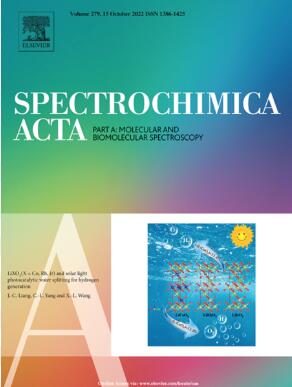A turn-on supramolecular probe for visible detection and accurate identification of phenethylamine with orange emission
IF 4.3
2区 化学
Q1 SPECTROSCOPY
Spectrochimica Acta Part A: Molecular and Biomolecular Spectroscopy
Pub Date : 2025-06-28
DOI:10.1016/j.saa.2025.126555
引用次数: 0
Abstract
The supramolecular fluorescent probe exhibited promising application in the field of detection and analysis, but developing supramolecular fluorescent probes with long wavelength emission and enhancement functions for the detection of phenylethylamines is a challenge. In this work, the guest molecule SPn with a D-π-A structure was designed and synthesized, and supramolecular fluorescent probe (SPn/Q[8]) with long wavelength emission was constructed by the host–guest interaction with cucurbit[8]uril (Q[8]). This probe detects phenethylamines based on an indicator displacement assay, which is a process characterized by a fast effect rate (within 6.24 s), high selectivity, and low detection limit. In addition, a smartphone-based quantitative detection system was developed for trace detection of phenethylamine, with a detection limit of 2.35 μM. This research not only developed a new approach for supramolecular fluorescent probes, but also provided a useful tool for the on-site detection of phenylethylamine.

一种用于苯乙胺可见光检测和准确鉴定的橙色发射的开启超分子探针
超分子荧光探针在检测和分析领域具有广阔的应用前景,但开发具有长波发射和增强功能的超分子荧光探针用于检测苯基乙胺是一个挑战。本文设计并合成了具有D-π-A结构的客体分子SPn,并通过与瓜[8]uril (Q[8])的主客体相互作用构建了长波发射的超分子荧光探针(SPn/Q[8])。该探针基于指示剂置换法检测苯乙胺,具有见效快(6.24 s以内)、选择性高、检出限低的特点。此外,开发了基于智能手机的苯乙胺定量检测系统,检测限为2.35 μM。本研究不仅开辟了超分子荧光探针的新途径,而且为苯乙胺的现场检测提供了有用的工具。
本文章由计算机程序翻译,如有差异,请以英文原文为准。
求助全文
约1分钟内获得全文
求助全文
来源期刊
CiteScore
8.40
自引率
11.40%
发文量
1364
审稿时长
40 days
期刊介绍:
Spectrochimica Acta, Part A: Molecular and Biomolecular Spectroscopy (SAA) is an interdisciplinary journal which spans from basic to applied aspects of optical spectroscopy in chemistry, medicine, biology, and materials science.
The journal publishes original scientific papers that feature high-quality spectroscopic data and analysis. From the broad range of optical spectroscopies, the emphasis is on electronic, vibrational or rotational spectra of molecules, rather than on spectroscopy based on magnetic moments.
Criteria for publication in SAA are novelty, uniqueness, and outstanding quality. Routine applications of spectroscopic techniques and computational methods are not appropriate.
Topics of particular interest of Spectrochimica Acta Part A include, but are not limited to:
Spectroscopy and dynamics of bioanalytical, biomedical, environmental, and atmospheric sciences,
Novel experimental techniques or instrumentation for molecular spectroscopy,
Novel theoretical and computational methods,
Novel applications in photochemistry and photobiology,
Novel interpretational approaches as well as advances in data analysis based on electronic or vibrational spectroscopy.

 求助内容:
求助内容: 应助结果提醒方式:
应助结果提醒方式:


